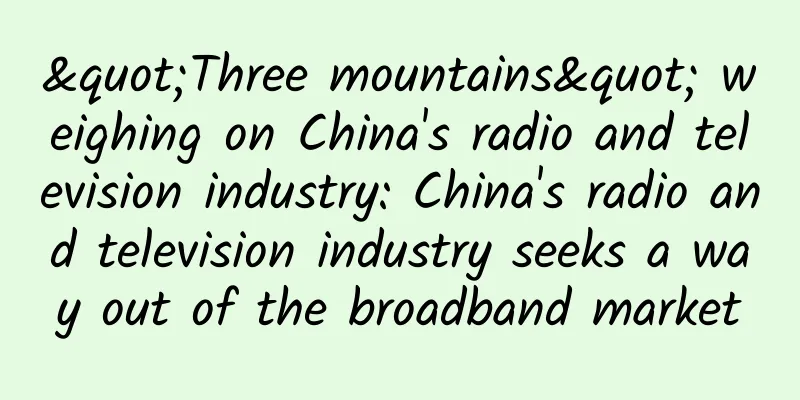Review of the optical fiber industry in 2016: The east wind overwhelms the west wind, and quantitative changes induce qualitative changes

|
For the optical fiber industry, 2016 is a special year. 50 years ago, Chinese scientist Charles Kao published the paper "Surface Waveguides in Optical Frequency Dielectric Fibers", which systematically proposed the concept of using optical fibers to transmit communication signals for the first time. He was hailed as the "Father of Optical Fiber". 40 years ago (1976), China developed the first optical fiber. 30 years ago (1986), China's first optical fiber company, Xigu Optical Communication, was established, opening the curtain of China's optical communication construction. Things have changed over the years. Today, China is the world's largest producer and consumer of optical fiber and cable. The five leading enterprises, Changfei, Hengtong Optics, Fiberhome, Zhongtian Technology, and Futong Group, account for more than half of the global market share. There are also a large number of optical fiber enterprises forming the second echelon. The "oldest" enterprise, Xigu Guangtong, has also regained its vitality. The "Conference to Commemorate the 50th Anniversary of the Invention of Optical Fiber" and the 30th Anniversary Celebration of Xigu Guangtong have added a festive atmosphere to this year's industry prosperity. This may be the best era. Chinese optical fiber enterprises are invincible in the domestic market, and they also face the historic opportunity of the "Belt and Road" when going abroad. However, Chinese optical fiber enterprises are far behind Huawei and ZTE in terms of market share and brand influence in the international market, and are still in the catching-up stage in terms of advanced technology. The goal and way out for Chinese optical fiber enterprises must be internationalization, and the road is long and long. A bumper year, setting sail In November 2016, Wuhan, China Optics Valley hosted the first World Optical Fiber and Cable Conference, hosted by CRU, an authoritative analysis organization in the optical fiber industry. Elites from the global optical fiber industry gathered here to discuss the needs of the optical fiber industry, industrial technology, and international cooperation and development opportunities. This is a landmark event for China's optical fiber industry to demonstrate its influence. Since China began large-scale construction of 3G in 2009, China has been the world's largest optical fiber and cable consumer market for many consecutive years, and has cultivated 5-6 optical fiber companies ranked among the top 10 in the world. In 2015, China Mobile launched the largest optical fiber centralized procurement in history, accounting for 1/3 of the global demand; in 2016, China Mobile's move was still generous, followed by China Telecom. The demand for optical fiber continued to be in short supply, and the price of optical fiber also rose after "several consecutive declines", and this situation will continue in 2017. The concerns about the overcapacity of optical fiber and cable came to an abrupt end in 2016. As one expert commented, "overcapacity exists in all walks of life in the Chinese market", and the optical fiber industry has seen it many times before. It was very serious in 2014. The release of expanded capacity led to a sharp drop in optical fiber prices, and the profit performance of some companies was terrible. However, after surviving this most difficult period, the large-scale construction of 4G and the "Broadband China Strategy" started to move forward, bringing high growth in demand, and the industry quickly resumed prosperity. Of course, in addition to the huge "granary" of the Chinese market, China also launched anti-dumping of optical fiber and optical rods, which effectively maintained market fairness. The anti-dumping of optical rods launched last year began to take effect this year. The shortage of imported optical rods has limited the amount of optical fiber drawing. The release of domestic optical rod production capacity will be after 2017. The change in supply and demand has led to a bottoming out of optical fiber prices, increased corporate profits, and accumulated capital for investment in new technology research and development. Judging from the market alone, the optical fiber industry has achieved "the east wind prevails over the west wind". YOFC's optical fiber rod and optical fiber sales volume ranks first in the world, and optical cable ranks second in the world; Hengtong Optics, Fiberhome Communications, Zhongtian Technology, Futong Group, etc. are also among the top 10 in the world; the control of the Chinese market will allow Chinese optical fiber companies to maintain their leading position in the industry in the next few years. At the 2017 Hengtong Group and Media Interactive Exchange Conference, John Johnson, President of CRU China, pointed out that China's demand in 2016 accounted for 57% of the world's demand, which determined the industry structure. Therefore, in addition to conveying confidence, the more important purpose of this World Optical Fiber and Cable Conference is to communicate on the development of international markets. After eight consecutive years of large-scale construction, China has been able to rival developed countries in terms of communication infrastructure. According to John Johnson's statistics, China's cumulative total optical fiber installation is equivalent to that of the United States, but it took a much shorter time. Communications are the core infrastructure for economic development. The construction of global communications infrastructure is very uneven. There is a vast market in developing countries outside of China with huge potential. This is the blue ocean market that Chinese optical fiber companies must strive for next. If the Chinese market determines the "lower limit" of Chinese optical fiber enterprises, the international market determines their "upper limit". The "Belt and Road" initiative provides Chinese optical fiber enterprises with opportunities to sail far, which need to be grasped with strategic determination. Competing on the same stage, technology-based In the international market competition, Chinese optical fiber enterprises have lost their local advantages. As latecomers, they are lacking in brand influence and market channels, and must make greater efforts. This is what Chinese optical fiber enterprises, especially leading enterprises, are doing. In 2016, C114 interviewed the leaders of five major enterprises. The five enterprises all showed strong ambitions for internationalization and formulated corresponding strategic plans. For example, since the implementation of the internationalization strategy in 2014, Changfei has established overseas factories in Myanmar, Indonesia and South Africa. Starting from 2015, it plans to invest in one overseas project every year in the next 5-6 years. In the first half of 2016, Changfei's international market revenue increased by 67% year-on-year, accounting for 10% of its revenue, and the growth rate was much higher than that of the domestic market. Hengtong Optics' "555 Internationalization Strategy" (50% international market, 50% international capital, 50% international talents) is advancing rapidly; Zhongtian Technology is sorting out the countries along the "Belt and Road" to find markets with greater potential. The initial goal is to add 2 to 3 overseas subsidiaries in the next few years and undertake system engineering... Technology has become more important than ever before. The optical fiber industry is roughly divided into optical rod technology, optical fiber technology and optical cable technology. Rod making and fiber drawing require considerable technical strength. Among them, optical cable technology is relatively mature, and ordinary optical fiber manufacturing technology is also mature. High-end optical fiber used in large-bandwidth backbone networks has a higher threshold, and the threshold for optical rod technology is even higher. In addition, marine optical fiber and cable are also an important market coveted by Chinese optical fiber companies. For example, the shortage of optical rods has limited the optical fiber production capacity of many Chinese optical fiber companies, and they can only worry about the strong market demand. As large companies move towards the integration of rods, fibers and cables, it will be more difficult for manufacturers without optical rod technology to survive. In addition, China's optical rod technology still lags behind that of American and Japanese giants. Optical rods account for 70% of the value of the optical fiber industry chain, which is a threshold that Chinese optical fiber companies must break through. In terms of optical fiber, the rapid growth of traffic has forced backbone networks to continuously increase bandwidth. The 400G era is approaching, and ultra-low-loss optical fiber used in future backbone networks has become a research hotspot in the past two years. Corning has taken the lead in the research and development and application of ultra-low-loss optical fiber. Domestic companies such as Changfei and Hengtong Optics are also catching up, and have received strong support from the national "Industrial Base Strengthening Project". Ultra-low-loss optical fiber is not the largest optical fiber category shipped, but it is a must for optical fiber companies to improve their market competitiveness and brand influence. In terms of submarine cables, the three international giants, Alcatel-Lucent, NEC and Tyco, have a monopoly. After several years of technical preparation, Chinese optical fiber companies have made breakthroughs in offshore areas, with Huawei Marine, Hengtong Marine, Zhongtian Technology, Fiberhome and other companies as typical representatives. Submarine cables are the last high ground that Chinese optical fiber companies must conquer. As the "crown jewel" of the entire industry chain, sufficient patience and strategic investment are required. In the past few years, Chinese optical fiber enterprises have taken the lead in scale by virtue of their strong market capabilities, excellent cost-effectiveness and localization advantages. Now, quantitative changes have induced qualitative changes. Chinese optical fiber enterprises have the strength to challenge international giants in the international market. Looking to the future, Chinese optical fiber enterprises must continue to make breakthroughs in technology research and development and use technology to consolidate the achievements they have made, so that they can maneuver in the international market. Huawei and ZTE, the kings in the field of optical equipment, are role models for the internationalization of Chinese optical fiber enterprises. |
<<: my country will start deploying and building IPv6 address projects in 2017
>>: "Cyber thieves" are rampant and explore the black production chain of information data
Recommend
UFOVPS Spring Festival 50% off, top up 200 yuan to get 30 yuan, Japan/Hong Kong CN2 GIA/US high-defense VPS monthly payment starts from 19 yuan
UFOVPS has launched a special promotion for the S...
Graphical explanation | A brief history of what is HTTP
[[344212]] This article is reprinted from the WeC...
The top five most popular network industry skills in 2018
In the rapidly evolving IT field, professionals a...
Pull or Push? How to choose a monitoring system?
[[421126]] A variety of monitoring systems Monito...
IDC Commentary: What are the remaining obstacles to China's 5G?
With the news that Nokia and Ericsson won the bid...
The pace of 5G commercialization is accelerating, and smart hardware is experiencing rapid development
As another technological concept after smartphone...
Deepin Technology was invited to attend the 2019 Annual Meeting of Jiangxi Health Information and Health Medical Big Data Society and delivered an important speech
From November 13 to 15, 2019, the 2019 Jiangxi He...
Huawei launches MAE-Litem, the world's first integrated converged website for wireless, transmission, and core networks, making digital transformation in the industry a breeze
Recently, the 16th International Coal Expo was he...
Gcore (gcorelabs) Russian Khabarovsk VPS simple test
In the last article, I shared the simple test inf...
H.266 codec standard released to replace H.265/HEVC: video clarity remains unchanged, data volume is halved
This week, Fraunhofer HHI officially announced th...
China builds quantum communication network to resist all known hacker attacks
On January 7, news came from the University of Sc...
Ransomware cannot be prevented? "Dynamic security defense" + "key data backup"
Recently, a well-known domestic financial softwar...
Operators’ deployment of the Metaverse: a good business that will not lose money whether you win or lose
[[437233]] Recently, the hottest word is naturall...
Edge computing is the key to unlocking 5G’s true potential
[[434589]] The hype for 5G has been an increasing...
Stop making excuses for being conservative. Chongqing Local Taxation Bureau has already tasted the sweetness of IT innovation in the past eight years!
Editor’s Note: The Chongqing Local Taxation Burea...









